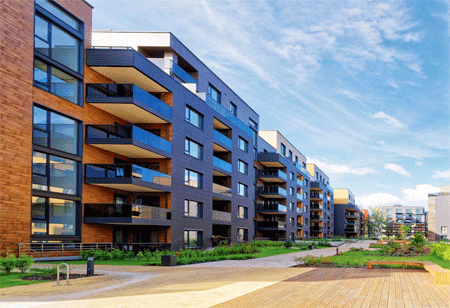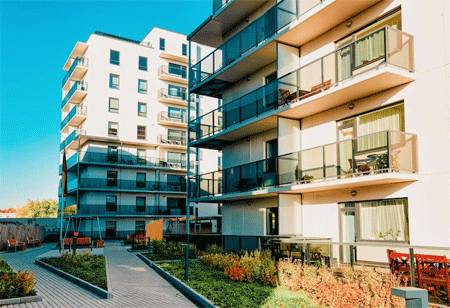
When we talk about metro cities, it reminds us skyscraper building, congested roads, brightly lit up offices and urban civilized and sophisticated people. This picture also reminds us that how people have started coming to stay in urban areas and increasing the population of urban India. If you talk about tech city Bangalore, the first picture comes to our mind is the tech parks, terrific traffic jam, congested roads, and vast stretch of housing complexes.
Here you can find an IT employee in every 2 minutes, you can find ola/uber, Swiggy or Zomato delivery boy in every 1 minute, you can notice tech parks in every 3-4 mins and more-over, in every alley of Bangalore, you can find at least one person from different state. So, such a huge population should be accommodated properly and here comes the significance of residential buildings.
Population is increasing in leaps and bounds in every metro city, and it is leaving no stone unturned to make us realize the need for a good budget friendly and sustainable accommodation. Now with the advancement of Architectural Science new concepts and designs of buildings are coming up and hitting the market at the right spot and earning both praises and pennies. The concept of Modular homes is one of them. Modular homes are often called pre-fabricated homes and it is built in parts or modules in the factory. With each passing day the number of nuclear family is increasing giving rise to urban flat culture where interior design plays a key role. So, by now we are quite acquainted with the concept of Modular Kitchen, but this concept of modular homes is not that familiar to many of us.
Primarily, the concept of modular homes was first developed in the 1960s in India, they were primarily used for experimental purposes. But now, it has become one of the widely used methods of building urban housing in populated metro cities like Bangalore, Mumbai, Kolkata, and Delhi. Modular homes are the trendiest cost-effective and time-saving creation of Architectural science. It is built in the factory following an assembly line, by expert and specialized workers, as it is carried to the construction-site to assemble with the help of high-power cranes. Modular homes come in a wide variety of shapes, sizes and designs and also it can be customized starting from floor plans, wall texture till the orientation according to the taste and demand of the owners.

Conventional Site-built Home Vs Modular Homes: Where the building of conventional homes starts on the site, on the other hand, the making of modular homes starts using Computer-aided Design (CAD). Since the construction work continues under the vast sky so it can be obstructed due to adverse calamity like rain, storm, flood and more, which the modular homes don’t face. The assembling of the modular homes takes a few days, but the conventional brick-mortar house takes years to finish. Comparing to the conventional housing, modular homes are quite cost-effective as it doesn’t require large pool of workforce, as maximum part of the job is done through advanced machineries. Modular homes always maintain a strict quality which is somewhere absent in making of conventional homes, so that the houses are durable and maintains a good quality standard. Modular homes are more environment-friendly because as they are built in factories it generates less wastes and harmful by-products.
"Architecture is the learned game, correct and magnificent, of forms assembled in the light. - Le Corbusier"
Types of Modular Buildings
Increasing level of population and deterioration of climatic condition has made the construction of modular homes an obvious solution. With wide variety of modular house building methods, we can also conserve the nature. A few renowned modular buildings are-
Bottomline
As we’re continuing to go forward towards our future, we need to think sensibly about sustainability so that our future generations don’t have to suffer the detrimental consequences of pollution. Due to its cost effective, time saving and durable nature, modular homes are being penetrated in the global real estate and construction market. The global modular housing market is valued $97.51 billion in 2023 and it will surpass 191.11 billion by 2033 exhibiting a CAGR of 7.4 percent. The market size of prefabricated home in India is estimated at $2.3 billion in 2023 and expected to grow with CAGR of 13 percent.
Notorious and prodigious builders of India like Prestige Group, Sobha Developers, Salarpuria Sattva, DLF, Godrej Properties are using this modular-home building techniques for their every ongoing and upcoming project which are selling like hotcakes in major metro cities of India like Mumbai, Delhi, Bangalore and fetching them hefty profits and giving the house owners a parcel of happiness within budget.
We use cookies to ensure you get the best experience on our website. Read more...
Copyright © 2025 HomesIndiaMagazine. All Rights Reserved.